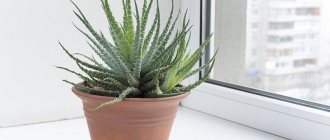Primrose (Primula) is a herbaceous plant from the Primrose family, which unites about 500 species of annuals and perennials. In nature, primrose can grow anywhere where the climate is temperate with sufficient soil moisture. The culture prefers the banks of rivers, mountain streams of North America, Europe, and Asia.
Primrose can be grown in the garden, as well as indoors. For growing in pots, gardeners prefer to choose perennial species that can delight with their flowering throughout the year. But most varieties of primrose bloom in winter and in the first half of spring.
Types and varieties of primrose for growing at home
Garden species adapted to growing outside are more resistant to cold. There are varieties that do well both indoors and outdoors. The types of primroses described below are mainly grown in pots.
Stemless or common (vulgaris)
A hybrid that can be grown both in the garden and indoors. This is a perennial up to 20 cm high, which is found in Asia, Europe, and Africa. The leaves are elongated, elliptical, bright green. The flowers are solitary, placed on thin peduncles. The color of the flowers may vary depending on the variety.
Popular varieties of common primrose:
- Sphinx Aprico,
- Sphinx F1 neon Rose,
- Eclipse Violet with Rim,
- Pioneer F1.
Chinese (chinensis)
Perennial, about 0.3 m high. The leaf blades are petiolate, rounded-heart-shaped, with denticles along the edges, collected in a rosette. Flowers up to 4 cm in diameter are collected in umbellate inflorescences. Depending on the variety, Chinese primrose flowers can be simple or double and vary in shape and shade.
Kewskaya (kewensis)
A rare species that is intended specifically for growing in a pot. The leaves are green, with a whitish coating and jagged edges up to 20 cm long. The inflorescences are umbellate, collected on a long peduncle. The flowers are small, yellow in color.
Soft or soft-leaved (malacoides)
A herbaceous plant native to China, up to 0.5 m high. The leaves are rosette, with serrated edges, heart-shaped or oval. The peduncles are tall, leafless, there can be up to 8 of them on one bush. Each one contains up to 10-20 flowers. They can be red, pink or white, with a yellow spot in the middle. Blooms in late winter - early spring.
Popular varieties:
- Mars,
- White pearls,
- The Snow Queen,
- Juliet.
Obconical
One of the most popular species comes from China, no more than 20 cm high. Perennial with oblong heart-shaped leaves, serrated along the edges. The plant blooms in early winter and spring. But with good care it can bloom almost all year round. Flowers are located on short peduncles. Species obconica contains substances on its leaves that can cause allergies.
New varieties and hybrids have been developed that are safe for allergy sufferers:
- Touch me
- Grace F1,
- Libre F1.
Groups of varieties and hybrids
The situation was “saved” by Dutch breeders. The modern hybrids of primrose obconiki they created practically do not emit primogen and are not allergens, which allows all lovers of indoor flora to grow these delicate, touching plants without fear, if desired.
The large-flowered Touch me primrose variety group has graceful bushes with large flowers of various colors, which are most decorative in spring and autumn during the peak flowering period. This primrose is completely safe from a medical point of view.
Varieties of the Grace F1 series are characterized by compact plants (20-25 cm in height) with large flowers, shining with a bright palette of different colors and shades.
The Libre F1 series does not contain the allergen primin in the green parts of plants. The colors of the flowers in this series include 9 shades, among which orange and two-color corollas look unusual. The leaves are collected in a basal rosette. One plant can produce up to 10 flower stalks, each with up to 20 flowers.
Home care
Primrose is considered a non-capricious plant. Therefore, even an inexperienced gardener can grow it at home. But in order to make the plant bloom long and profusely, you need to create suitable conditions for it.
Location and lighting
The flower loves good lighting. Therefore, it is recommended to place the pot in a bright room, but without direct sun. Windows in an eastern or western location are suitable for primrose. Northern window sills are also allowed if there is enough light on them. The main thing is to avoid drafts. In winter, when primrose blooms, it is necessary to provide it with additional lighting.
Choosing a flowerpot
Small but wide pots are more suitable for primroses. For each subsequent transplant, take a container several centimeters wider than the previous one. You should not take a pot that is too deep to avoid acidification of the soil and rotting of the roots.
Soil and drainage
When choosing soil for primrose, you can choose ready-made mixtures that are designed specifically for Primroses. A substrate for geraniums is also suitable.
You can prepare the substrate yourself:
- leaf soil (1);
- peat (1);
- sand (1);
- turf (1).
Be sure to lay a layer of drainage at the bottom of the pot. This could be gravel, expanded clay, broken shards.
Planting and transplanting
Perennial species and varieties require regular replanting. It is recommended to replant young plants no more than once a year. This can only be done after flowering. During this period, the primrose still has the strength to lay new buds, it quickly adapts to new conditions.
Transplant procedure:
- Place a 2 cm thick layer of drainage in the pot. Sprinkle a little soil on top.
- Remove the primrose from the old pot without damaging the roots.
- Carefully transfer it into a new container. Fill the free space with soil, lightly press it down and water it.
Step-by-step video - instructions for transplanting Primrose after purchase:
Air temperature and humidity
Primrose prefers cool conditions. During flowering, the temperature should be at +12..15°C. For reverse conical primrose – +16..20°С. It is difficult to achieve such a temperature at home. Therefore, from the beginning of spring, you can take the flowerpot out to a cool balcony or veranda. After flowering, you can even plant the plant in the garden under the diffused light of tree crowns. In winter, the flower pot should be placed away from radiators, closer to a cool window.
The crop has no special requirements for air humidity.
But she doesn’t like it if the room is very dry. As a result, the tips of the leaves of the plant begin to dry out. On a note! To increase humidity, you can spray primrose leaves with warm, soft water. It is important to ensure that it does not get on the flowers. Nearby you can place a container of water or a tray with wet expanded clay.
Feeding and fertilizers
You can apply fertilizer after the buds begin to form. It is recommended to use complex fertilizers for flowering plants 2 times a week. But the dosage of the drug should be 2 times weaker than indicated in the instructions. Primrose does not tolerate excess salts. Therefore, it is important not to oversaturate the soil with fertilizers. Fertilize until the end of flowering.
Watering
It depends on the health and flowering of primrose. Watering should be regular but moderate. The soil should always be slightly damp during flowering. To maintain its moisture, you can place the pot on a tray with damp sphagnum moss and periodically add water to it.
When the crop has faded, the soil is moistened only after drying by 2-3 cm. During rest, the plant should be watered less frequently, avoiding stagnation of water and acidification of the soil.
Flowering period
Unlike most other indoor plants, which go into a dormant period in the fall, for primroses this is the period when they prepare to bloom. Primrose requires regular watering, spraying, and good lighting. It can bloom in different shades, depending on the species. To prolong flowering, it is necessary to trim off faded flowers in time.
Transplanting a plant
Primrose from time to time.
. It is best to do this once a year, preferably in the fall or spring.
In the spring, when any frosts have completely ended, home flowers can be planted in the ground outside or transplanted into another pot.
eared Primroses may bloom for the second time.
. Starting in September, non-frost-resistant plant species can be transplanted into pots. Just in case, it is recommended to replant even frost-resistant Primroses one flower at a time into flowerpots.
Plants left for wintering in the open ground are carefully inspected. A bush with several rosettes is divided, and each plant is planted in a separate hole. If this is not done, due to constant crowding, the flowers will be smaller in size.
Primrose
It is recommended to plant in open ground in cloudy weather. If the sun is shining on this day, then the flowers must be protected from it. It is enough to turn the bucket over the newly planted bush.
In winter, the plants are covered with a layer of leaves or hay, about eight centimeters thick. Pine sawdust or pine needles are not suitable as mulch. They acidify the soil.
Diseases and pests
If caring for Primrose
is not observed properly, the plant may be affected by fungal diseases, which often lead to rotting of the root system. They may also be susceptible to viral diseases, which can cause plant growth stunting, leaf deformation and chlorosis.
In order to prevent the spread of these diseases, it is recommended to treat them with fungicides.
The main pests of the plant are aphids, thrips and spider mites.
Their destruction is carried out mechanically. To do this, they must be removed with a swab dipped in soapy water or alcohol.
If you notice a large number of pests on your plant, then it is more advisable to use any insecticides against them.
Reproduction methods
Indoor primroses are propagated in different ways.
Dividing the bush
The procedure is carried out after flowering has ended. For replanting, take a plant that is more than 3-4 years old. First place the flower in a shaded place, water it from time to time without drying out the soil. Carefully remove the bush from the pot and shake the soil. Divide it into parts so that each has a growth point. Sprinkle the cut areas with ash. Immediately plant the cuttings in a low container, cover the top with film, and place in a bright place. Periodically remove the cover and water the substrate abundantly. After a few weeks, transplant the divisions into separate pots with a suitable soil mixture.
Cuttings
The method is suitable for those primroses that have only one rosette and there is no way to divide the bush. Separate a leaf with a petiole and bud from the parent plant with a sharp knife. Cut the top of the leaf in half. Plant the cuttings in a mixture of peat and sand to a depth of 1 cm at an angle so that the bud looks up. Leave to root at t +18°C. Rooting occurs within 2.5-3 months. After the roots appear and 3-4 young leaves form, transplant the plants into individual containers.
Propagation by seeds
This is the most troublesome and time-consuming method of reproduction. Seeds can be sown in summer and in late autumn - early winter, depending on the type of primrose. Prepare shallow and wide containers, fill them with a mixture of deciduous soil and sand. Distribute the seeds on the surface of a damp substrate, cover the container with glass, and place in a bright place without direct sun with a temperature of about +18°C. Periodically, the cover must be removed to ventilate the crops and moisten the soil. After a few months, thin out the stronger seedlings and transplant them into individual pots.
Subtleties of sowing seeds
There are certain subtleties of sowing primrose seeds. First you need to prepare suitable soil and containers. Let’s immediately dispel all doubts about stratification. If you have hybrid seeds, then this procedure is not necessary. If these are varietal forms of the crop, then it is best to put the bags in the refrigerator a month before planting. Usually, if in doubt, we do the following. We sow and keep the containers at a temperature of +12 - +18° for 14 days. If shoots do not appear, then we dig the containers, covered with cellophane, into the snow for 2 weeks and place them in heat again. Usually this method works flawlessly.
Soil and containers
You can take absolutely any soil. During germination, primrose seeds are not at all demanding on the chemical composition of the soil. The most important thing is that it is free from weed seeds, fungal spores and bacteria. It is also important to check the pH reaction. It must be neutral or alkaline. This crop does not tolerate acidic soils. Before sowing, you can add wood ash or dolomite flour. It is advisable to pre-heat the soil in the oven for 30 - 40 minutes. Then treat the entire depth with one of the fungicides (Topaz, Vitaros, Maxim or Ridomil Gold).
Before sowing, mix the soil with vermiculite and agroperlite. They are taken 1/10 of the total volume of soil. These are soil improvers that prevent it from drying out and provide sufficient root respiration for primrose seedlings. A suitable container can be a plastic container with a tight-fitting lid, a seedling cassette, or any bowl more than 10 cm deep with transparent sides.
Sowing procedure
Primrose seeds do not need to be planted in the ground when sowing. The procedure begins by filling the container with soil mixture. The height of the soil should be approximately 5 cm. Then spread vermiculite in a 5 mm layer over the compacted surface. And then sow according to it. If there are a lot of seeds, then you can simply scatter them evenly. If it’s not enough, then moisten a toothpick with water and place one seed at a time on the surface at equal distances.
After sowing, it is worth moistening the surface with a spray bottle with warm water. Be sure to add a few drops of fungicide to it. This way you can disinfect the seeds and avoid blackleg disease.
After planting the primrose seeds is completed, cover the containers with plastic wrap or tight lids. We place them on the windowsill, where the temperature does not fall below 10° and does not rise above 18°. Shoots will begin to appear at home after 7 - 10 days.
Forcing primrose
During forcing, the primrose is transplanted into more favorable conditions for development. Thanks to this, you can get flowers faster, but at the same time the root is depleted. And the plant requires a longer recovery.
Primroses older than 2 years are used for forcing. Before the onset of frost, dig up a flower with a lump of earth. Immediately plant in a flower pot. Bring it into a cool room with a temperature of +4..8 degrees (can be in a cellar or basement). There is no need to water the plant. At the end of January or beginning of February, move the primrose to a bright room with a temperature of no more than +15..18°C. Remove dry and damaged leaves and stems. Gradually resume watering. With this care, primrose can bloom by the end of February. Often forcing is used to obtain flowers by March 8th. After 2-3 years, the procedure can be repeated, at the same time dividing the bush into parts for propagation.
Features of seasonal care
Primroses differ from other indoor crops in that their active growing season occurs in the winter. It is in the fall that the crop prepares for flowering. But in order to achieve abundant and long flowering, you need to ensure a dormant period.
After the bush has flowered, it is placed in a well-ventilated room, slightly shaded. The air should be cool +10..16°C. Since primrose rests in the summer, it is not very easy to provide cool conditions. You can plant a flower in the garden near shady trees. If flowers begin to bloom during the dormant period, they need to be removed.
Subtleties of care
Flower growers have an ambiguous attitude towards the character of this beauty - some consider her capricious, others unpretentious, and each of them is right in their own way. For a novice florist, growing oboniki will seem difficult, but for an experienced florist with an impressive amount of knowledge and experience, it will not be difficult at all. In general, the agricultural technology of obkoniki is simple. Here are the basic elements of caring for indoor primrose obconica at home.
Illumination
Obkonika prefers well-lit, but not sunny places. It would be optimal to place a pot of primrose on a southeast or southwest windowsill. Alternatively, you can place the flower on the north window, but when the weather is cloudy for a long time, you will need a fluorescent lamp for additional illumination.
Thermal mode
The comfortable temperature for obkonika should not be higher than 20 degrees, and during the period of budding and flowering it drops to +15 degrees to extend the period and increase the intensity of flowering. In modern conditions, portable floor air conditioners will help create such thermal parameters. For the summer, primrose can be buried in the garden along with a pot in a semi-shaded place, where rainwater will only benefit it; over the summer the bushes will become stocky and curly
In the fall, it is important not to miss the moment when the primrose needs to be returned to the house, since temperatures below +5 degrees are unacceptable for these plants. For successful wintering, experts consider +12 +15 degrees to be the optimal indoor temperature.
Watering
Primrose does not like either waterlogging or drying out, but will tolerate a short-term lack of moisture without consequences. If you made a mistake and missed timely watering, but caught yourself in time and corrected the situation, then the flower will not be particularly “offended” and will quickly restore its decorative appearance. The main thing is that such lapses in care do not become systematic. Water for irrigation should be used after standing for 24 hours. You need to water directly at the root (not on the leaves).
The name of this flower translates as “primrose”. In nature, there are more than five hundred species from the Primrose family. This herbaceous plant prefers to settle on moist soils in river valleys and in the mountains. At the moment, breeders have developed many varieties of this plant and many of them have managed to extend the flowering period for quite a long time.
- Short stature. The height of the trunk ranges from ten to twenty centimeters.
- The root system is superficial, fast-growing.
- The inflorescences are painted in a wide variety of colors. There is pink, purple, white and even striped primrose. The heartwood is bright and often of the opposite color.
- The diameter of the flowers is small, but the flowering itself is very abundant.
- The leaves are small and bright green.
This home flower is credited with many beneficial properties. For example, primrose leaves added to tea are believed to be extremely calming and their effect is often compared to mint. Young leaves can also be cut into fresh salads. The vitamin C content in primrose leaves is so enormous that one leaf can provide the daily requirement for a person.
Care errors and their elimination
Problems when growing Primrose and their elimination:
| Problem | Causes | Solution |
| Yellowing of leaves | Dry air, sunburn, excess nitrogen in the soil | Spray the leaves, place a container of water nearby, and do not oversaturate the soil with fertilizers. |
| Lethargy and dropping buds | High air temperature | Do not keep the plant in conditions above +16..18 degrees; it is especially important to observe the temperature regime during the flowering period |
| Light spots on leaves | Over-humidified air, too low temperature | If the primrose is kept in a cool place, it should not be over-watered |
Common problems when growing primulina
Primulines are less susceptible to disease than other Gesneriaceae, but when growing them you may encounter the following problems:
- Root rotting. Caused by waterlogging of the soil. It requires replanting into a looser substrate with pruning of rotten areas, treatment with fungicides and adjustment of the irrigation regime.
- Rotting of the base of the socket. Also associated with waterlogging. It is almost impossible to save the plant; you can only take the surviving leaves for cuttings.
- The appearance of spots on the leaves. It is caused either by water getting on the leaves when watering, or by sunburn. Diseased leaves are removed and maintenance conditions are adjusted.
- Curling of leaves and loss of turgor. Associated with excessively intense lighting. It is necessary to remove primulins from the bright sun.
Sometimes primulinas may not bloom for a long time, while growing an abundant vegetative mass. This phenomenon is associated with an excess intake of nitrogenous substances. In this case, it is necessary to transplant the plant into a less nutritious substrate, into a smaller pot and check the composition of the fertilizers used. There should not be more nitrogen in them than phosphorus and potassium.
Diseases and pests, control methods
Like other flowering crops, primrose can be susceptible to a number of diseases. The most common is spotting, which is caused by the fungus Ramularia cercosporella. Pale spots appear on the leaves, which turn gray over time, become covered with plaque and fall off. To save the plant, you need to treat it with a fungicide, for example Topsin, Fitosporin or Fundazol.
Excessive soil moisture can result in root and gray rot, powdery mildew, anthracnose, and rust. If a problem occurs, it is necessary to abruptly stop watering the plant, remove it from the pot, remove all damaged areas, and treat it with a fungicide. Transplant the primrose into fresh substrate.
Primrose pests:
- spider mite;
- aphid;
- whitefly
If infected, it is recommended to wash off the parasites under a warm shower. Allow the bush to dry and treat with insecticide:
- Aktara;
- Aktellik;
- Fitoverm;
- Intavir and others.
If necessary, repeat the procedure after 7-10 days.
Diseases
The most common disease of indoor primroses is root rot. The main reasons for its occurrence are excessive watering and lack of drainage. Developing rot can be identified by the following signs:
- Fading.
- Yellowed lower leaves.
- Black spots at the base of the rosette.
If these symptoms are detected, the plants are immediately watered with a fungicide solution. For example, you can use a foundation solution prepared at the rate of 2 g per 1 liter of water.
If the disease continues to progress, the bush is shaken out of the pot and washed under running water. After this, all rotten and blackened places on the plant are removed. Primrose treated in this way is planted in fresh soil.
This video tells you how to prolong the flowering of primrose obconica, how to feed it, and how to water it.
Primrose in the house: beneficial properties
The plant has been known since ancient times for its healing qualities. It contains many vitamins and carotene. The roots contain glycosides and essential oils. The leaves contain a lot of ascorbic acid. Therefore, in spring it is useful to eat salads with primrose as a source of vitamins.
Decoctions and infusions of the plant are effective for diseases of the respiratory system:
- laryngitis;
- bronchitis;
- tonsillitis.
Primrose decoction will help normalize sleep and stabilize the nervous system. But allergy sufferers should take primrose products with great caution. There are species that are strong allergens.
Indoor primrose is a spring primrose that can decorate any interior. Unlike garden species, it is more whimsical. But caring for the crop is not difficult; it reproduces easily and takes root when suitable conditions are created.
How to grow indoor Primrose and how to grow the plant at home? More useful tips for flower growers can be found in the following video:
Brief description of cultivation
When growing indoor primrose, special attention should be paid to lighting, temperature conditions, and air humidity levels.
- Temperature regime . From 12 to 18 degrees, the room should not be warmer than 20 degrees.
- Air humidity . If the air temperature in the room is within normal limits, then moderate air humidity is suitable for the plant. But if the room is warmer than 18 degrees, then the air humidity should be increased.
- Illumination . In summer, it needs a lot of diffused bright light. During the winter months, the bushes need additional lighting.
- Watering . The flowering bush is watered 2 or 3 times every 7 days. When flowering ends, watering is reduced to 1 or 2 times a week.
- Substrate . A well-drained fertile soil mixture, which can be acidic or neutral, is suitable.
- Fertilizer . Fertilizing is carried out 2 times a month, for this purpose liquid fertilizer is used.
- Transplant . In spring, the new pot should be slightly larger than the old one.
- Reproduction . Seed and vegetative methods.
Please note that the primrose throughout the entire growth period should be in conditions that are as similar as possible to natural ones. When the bush fades, it begins a dormant period, and its development slows down. To make the flower more powerful, it is transplanted into the garden in the spring, and with the onset of autumn it is again transferred to a heated room.
How to grow indoor primrose











